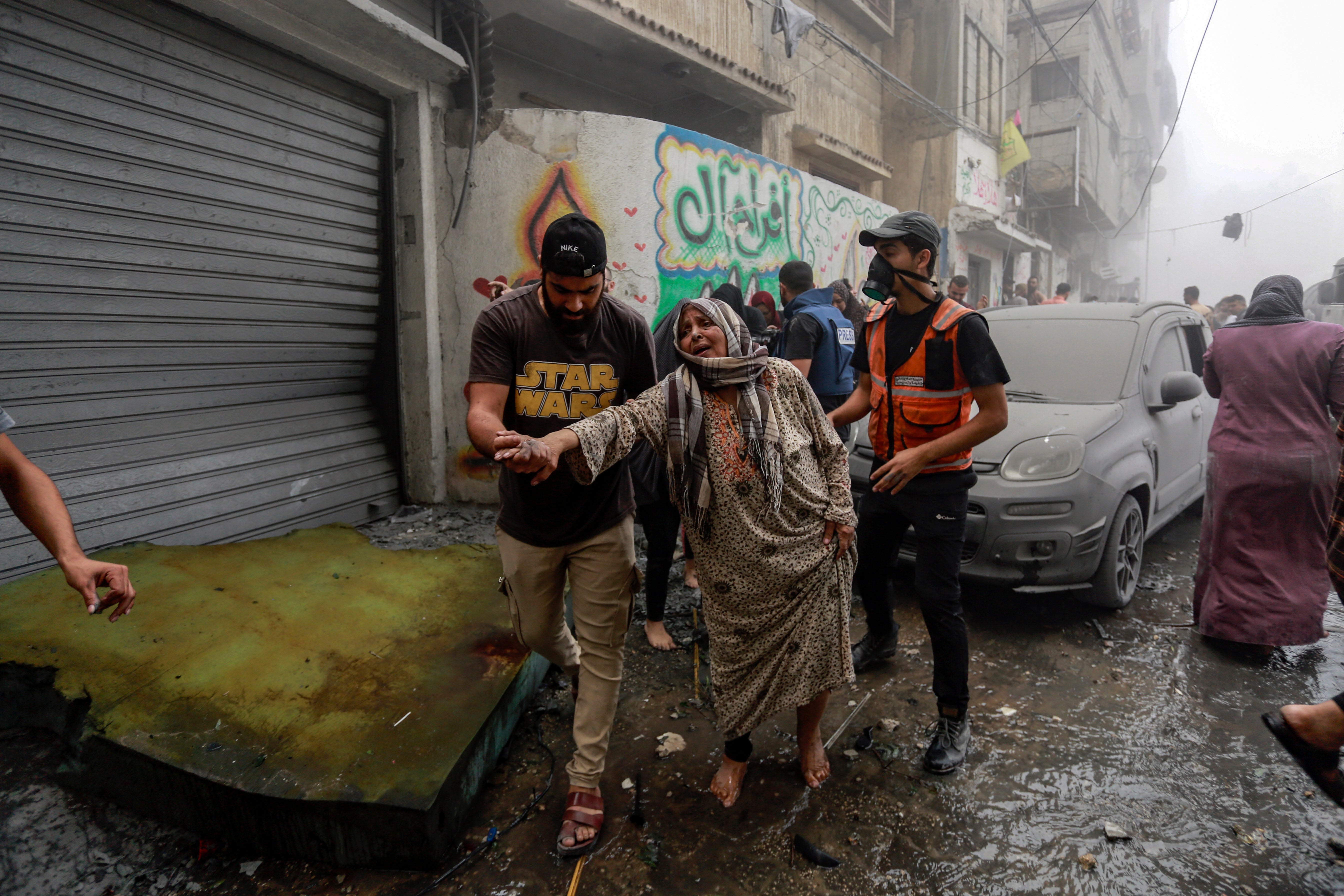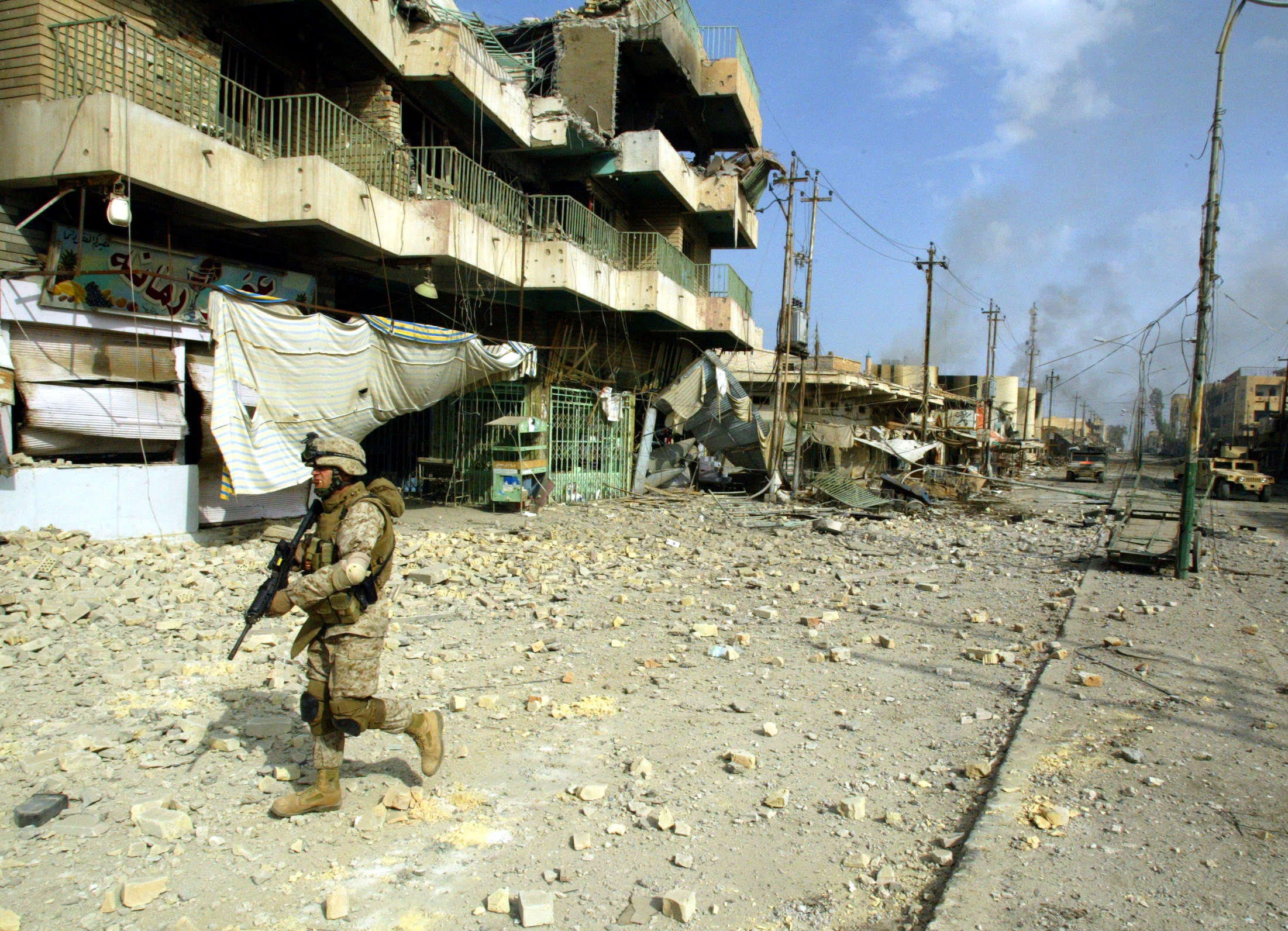We have become numb to civilians being killed in airstrikes
In the hierarchy of civilian deaths, victims of airstrikes are thought of as inconsequential, writes Richard Hall
When a missile strikes a building, the victims inside are often rendered unrecognisable. Layers of concrete crush what the explosion does not incinerate in a fireball. Limbs are ripped from the body. There are no descriptions of the way people die, or how their last moments were spent, because there is seldom anyone left to tell the tale. All that is left is a pile of rubble, a cloud of dust, and a list of names.
For the many years I worked as a correspondent in the Middle East, my time was devoted to investigating the deaths of civilians killed in airstrikes. I reported on civilian deaths in the US air campaign against Isis, Bashar al-Assad’s flattening of Syrian towns and cities — backed by Russian jets, Turkish airstrikes against Kurds in Iraq and Syria and a US-backed Saudi air campaign in Yemen. I studied countless grainy videos of strikes and the images of their aftermath, tracked down and interviewed the families of airstrike victims across the region and on rare occasions spoke to survivors.
What I found during those years was that a grim hierarchy of civilian death exists in the public imagination, one in which victims of airstrikes were thought of as an inconsequential, almost necessary, part of war.
All of those air campaigns took place against the backdrop of wars in which civilians were killed in a variety of awful ways. The theatrical brutality of Isis shocked and outraged the world, and prompted a massive military alliance of Western countries to destroy it by all means necessary. But thousands of civilian deaths caused by Western powers in their response to those atrocities barely elicited comment. The same was true for Russia’s relentless air campaign in Syria, and the Saudi campaign in Yemen.
Airstrikes sanitise the taking of a life in a way that no other method of killing can. There is a disconnect between the victim and the person who dispatches the missile. There is a disconnect between those who read about it thousands of miles away from the comfort of their home. Someone who reads a news story about an airstrike killing 50 people may recognise academically that it is a tragic event, but they will almost certainly not feel those deaths in the same way as if they read about a detailed cold-blooded murder of one person. The former is abstract, the latter is visceral.

We have become numb to decades of killing civilians in this way — from Vietnam to the Iraq war, the massive deployment of Western airpower to destroy a much smaller enemy is considered the default method of waging war, a necessary evil to protect our own citizens.
That disconnect allows us to separate the terrorists from the civilised West in our imagination. Our governments may kill far more civilians, but we do it accidentally — each one of them a tragic mistake for which there are no consequences.
This same logic is playing out in Israel’s bombardment of Gaza right now. In just 18 days, more than 6,500 Palestinians have been killed by Israeli airstrikes and artillery, including some 2,700 children, according to Gaza’s health ministry. That is a rate of 150 Palestinian children a day being killed by Israeli forces without drawing even a note of criticism from its allies.
Agnès Callamard, Amnesty International’s Secretary General, said last week that Israel had shown “a shocking disregard for civilian lives,” “pulverized street after street of residential buildings killing civilians on a mass scale” and “decimated Palestinian families, causing such destruction that surviving relatives have little but rubble to remember their loved ones by.”
Hamas’ massacre has been roundly and rightly condemned for its crime, but Israel has received almost unanimous support from leaders in the West, and only whispered utterances of caution for the protection of civilian life. In their eyes, thousands of dead civilians and the vast destruction of much of northern Gaza have not breached the bounds of proportionality.

One of the most sickening incidents of the Hamas attack, of which there were many, was the report of decapitated babies being found in the aftermath of the rampage. That vivid detail shocked the world, and deeply affected US president Joe Biden, who spoke of his distress at “terrorists beheading children.” Two weeks later, a video of a man in Gaza holding aloft a baby that appeared to have been decapitated by an airstrike elicited no such response.
There is a distinction here, of course. Hamas entered communities in southern Israel with a careful plan to murder civilians in cold blood. The images and videos from the 7 October massacre showed a brutal and methodical killing spree — children and the elderly were among the more than 1,400 people killed in the attack. Hamas has also fired thousands of indiscriminate rockets into Israel with the express intention of harming civilians.
But this is a moral distinction, rather than a practical one. It is a distinction that means little to those on the receiving end of the bombs, and it has allowed Western powers and their allies to cumulatively kill tens of thousands of civilians across the Middle East for years with no accountability.
If Israel’s aerial bombardment of Gaza continues at its current pace, it may yet eclipse the civilian death toll in any of the aforementioned campaigns. According to the monitoring group Airwars, the US-led anti-Isis coalition killed as many as 13,000 civilians over five years. The Saudi-led coalition fighting Houthi forces in Yemen is estimated to have killed nearly 9,000 civilians over eight years. The death toll in Gaza is halfway to reaching those totals in just two weeks.
This disparity in the way we classify civilian deaths between the righteous and the barbarous is behind much of the anger surrounding the Israel-Palestine conflict today. It is, at its root, an argument about the worth of a human life.


Join our commenting forum
Join thought-provoking conversations, follow other Independent readers and see their replies